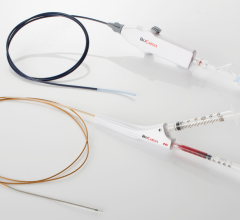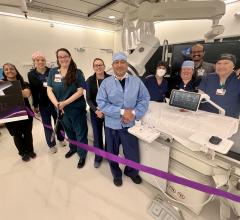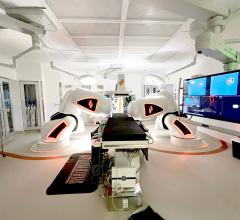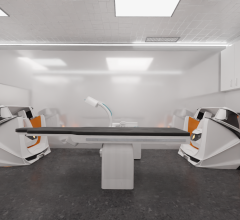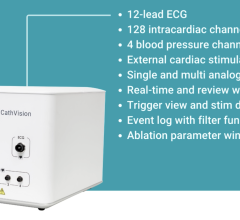
December 8, 2015 — At Ahuja Medical Center, University Hospitals (UH) cardiologists recently implanted the Boston Scientific Emblem Subcutaneous Implantable Cardioverter-Defibrillator (S-ICD) system, the first such procedure done at this hospital. The procedure was performed by Dina Sparano, M.D., a cardiac electrophysiologist at UH, together with Keith Kruithoff, M.D., in a patient who had survived a sudden cardiac arrest (SCA).
Across town, Sparano brought this latest version of the S-ICD to St. John Medical Center in Westlake, Ohio, the first Emblem S-ICD on Cleveland’s west side. The patient in this case was another survivor of SCA. The two procedures were performed days apart, representing significant advancements in cardiovascular care across the Cleveland area for UH.
SCA is a serious, life-threatening condition that happens abruptly and without warning. During SCA, the heart’s electrical system malfunctions causing dangerous, rapid heartbeats originating from the lower chambers of the heart. The heart’s mechanical activity fails and is no longer able to pump blood to the rest of the body. The lack of blood to the brain causes the person to lose consciousness quickly. If the person does not receive immediate treatment with defibrillation, brain damage and death can occur.
SCA accounts for over 325,000 deaths in the United States every year and is one of the leading causes of death. When death results, it is usually because life-saving therapy was not available in time. Implantable cardioverter-defibrillators are designed to detect this electrical disturbance and deliver an electric shock to the heart to restore a normal heartbeat. ICD therapy has been shown to effectively stop 95 percent or more of dangerously fast heart rhythms. With an ICD device, 19 out of 20 people will survive SCA.
The Emblem S-ICD System is the only defibrillator placed fully under the skin (subcutaneous) that provides protection from SCA without touching the heart or circulatory system, according to Boston Scientific. It is proven to be safe and efficacious in the treatment of SCA in appropriately selected patients. Having recently joined UH, Sparano brings a great deal of experience utilizing the S-ICD since its inception in clinical practice.
“The Emblem S-ICD represents the latest technology in a cardiac device that already sets itself apart for delivering life-saving therapy to patients at high risk for SCA on a minimally invasive platform. This device offers appropriately-selected patients maximal benefit at the lowest risk, and simply, is the perfect device for the right patient. I am excited and proud to say that through the UH Harrington Heart & Vascular Institute, we have access to such medical innovation that is both safe and effective, allowing us to provide the best care system-wide. The regularity of cardiology advancements being adopted at our medical centers is rapidly broadening.”
The device is designed to provide the same protection from SCA as traditional transvenous ICDs. However, the entirety of the Emblem S-ICD System sits just below the skin without the need for thin, insulated wires – known as leads – to be placed into the heart itself. This leaves the heart and blood vessels untouched, which may result in a less invasive treatment that avoids potentially serious short and long-term complications associated with placing leads in the heart.
As a second generation S-ICD, the EMBLEM S-ICD System provides patients with a smaller and thinner device that is projected to last 40 percent longer than the previous version, and is enabled for remote patient management.
The U.S. Food and Drug Administration (FDA) granted regulatory approval for the Emblem S-ICD system in March 2015.
For more information: www.uhhospitals.org

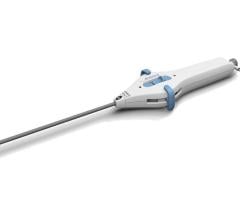
 July 31, 2024
July 31, 2024 
